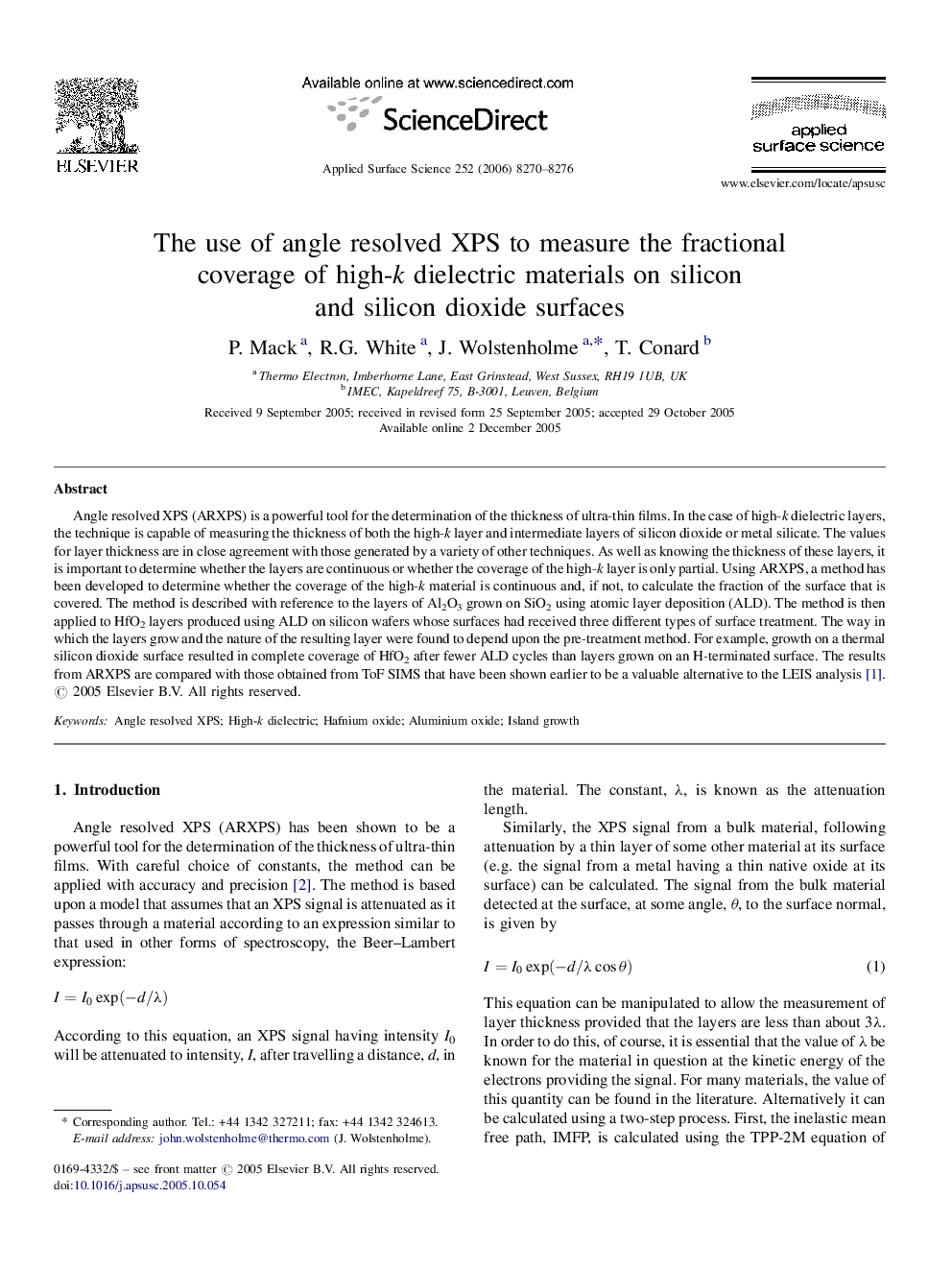| Article ID | Journal | Published Year | Pages | File Type |
|---|---|---|---|---|
| 5366212 | Applied Surface Science | 2006 | 7 Pages |
Abstract
Angle resolved XPS (ARXPS) is a powerful tool for the determination of the thickness of ultra-thin films. In the case of high-k dielectric layers, the technique is capable of measuring the thickness of both the high-k layer and intermediate layers of silicon dioxide or metal silicate. The values for layer thickness are in close agreement with those generated by a variety of other techniques. As well as knowing the thickness of these layers, it is important to determine whether the layers are continuous or whether the coverage of the high-k layer is only partial. Using ARXPS, a method has been developed to determine whether the coverage of the high-k material is continuous and, if not, to calculate the fraction of the surface that is covered. The method is described with reference to the layers of Al2O3 grown on SiO2 using atomic layer deposition (ALD). The method is then applied to HfO2 layers produced using ALD on silicon wafers whose surfaces had received three different types of surface treatment. The way in which the layers grow and the nature of the resulting layer were found to depend upon the pre-treatment method. For example, growth on a thermal silicon dioxide surface resulted in complete coverage of HfO2 after fewer ALD cycles than layers grown on an H-terminated surface. The results from ARXPS are compared with those obtained from ToF SIMS that have been shown earlier to be a valuable alternative to the LEIS analysis [1].
Related Topics
Physical Sciences and Engineering
Chemistry
Physical and Theoretical Chemistry
Authors
P. Mack, R.G. White, J. Wolstenholme, T. Conard,
